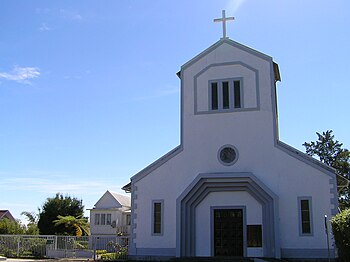The Domaine de la Réserve is a former sugar cane estate comprising a main house and various dependencies dating from the late 18th century. It's not normally open to the public and this year was the first time it could be visited as part of the European Heritage Days.
 |
| Main house, Domaine de la Réserve |
The main house is unusual for Reunion because there's no verandah on the principal facade.
 |
| side view, main house |
Near the house is a cobbled courtyard around which are the former stables.
 |
| looking into the cobbled courtyard; stables at the back |
 |
| old plough |
My husband and I were particularly interested to see the old chimney. We have a solar electricity project and at one point it was jeopardised by our house's proximity to the chimney, as it classed as a
Monument historique, ie a French
National Heritage Site. In the end - fortunately for us - it was not a problem.
 |
the famous chimney which nearly put an end to
our solar electricity project! |
 |
| old petrol pump |
The surrounding grounds are quite extensive and one of the features you notice is a large cast iron basin, which comes from Bellemene,
Saint Paul, on the island's west coast.
 |
| old cast iron basin |
 |
| impressive thorns on the trunk of this palm |
The estate is still surrounded by extensive fields of sugar cane.
 |
| sugar-cane cutting season is from June to December |
Next we headed a few miles down the road to the neighbouring municipality of Ste Suzanne to climb the lighthouse.
 |
| the cylindrical tower of Sainte Suzanne lighthouse |
 |
| there are 88 steps up to the top of the lighthouse |
The lighthouse is built 40 metres above sea level, and is 20.25 metres high. It was staffed until 1985, with keepers winding the clockwork mechanism every 4 hours. It was automated in 1989 and fully restored in 1996.
 |
| lens in the lantern |
It emits three white flashes every 15 seconds which are visible for 23 nautical miles.
 |
| looking north from the gallery |
 |
| looking south; Bois Rouge sugar factory is visible to the upper left |
 |
| picnic area at the foot of the lighthouse |
 |
| old lens |
 |
| anchor in the gardens outside the lighthouse |
The lighthouse visit certainly brought back memories - I think the last lighthouse I climbed was at
Dondra Head, the southern point of
Sri Lanka, three years ago.
Notes:

